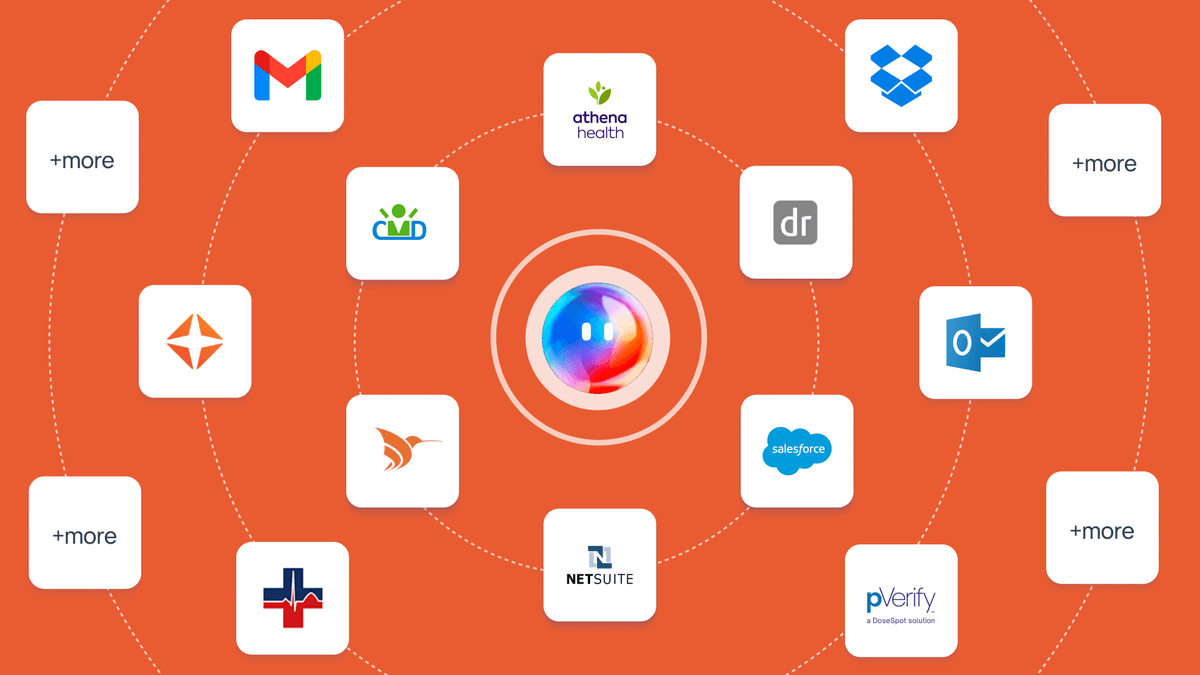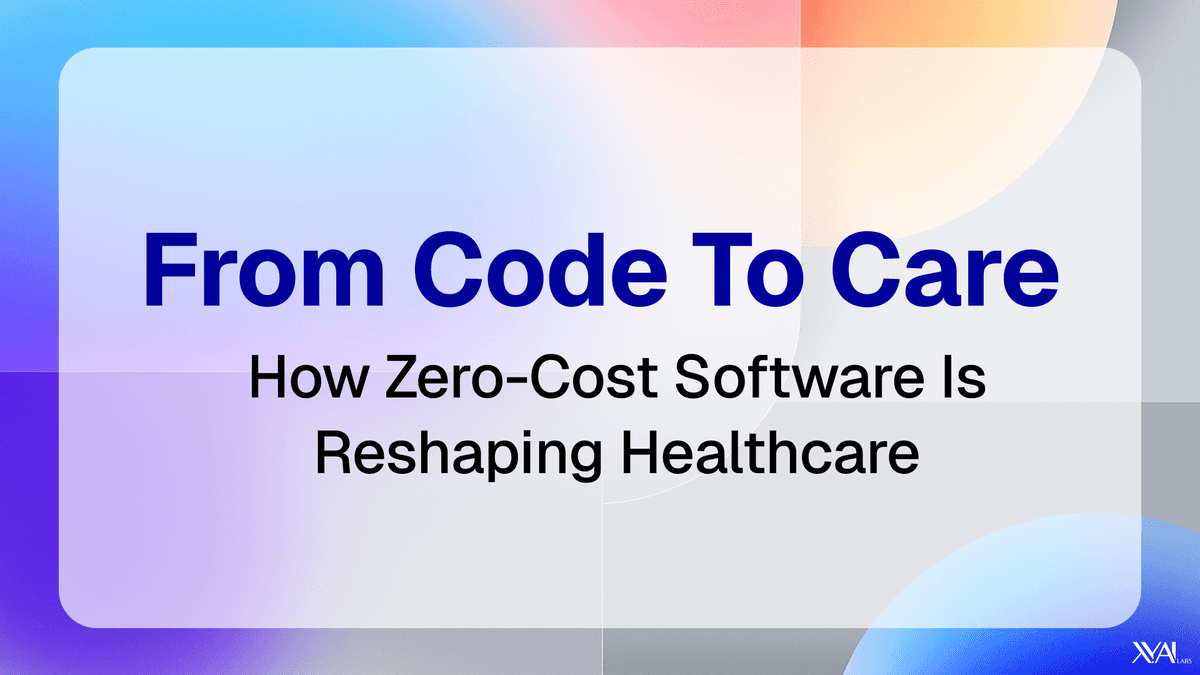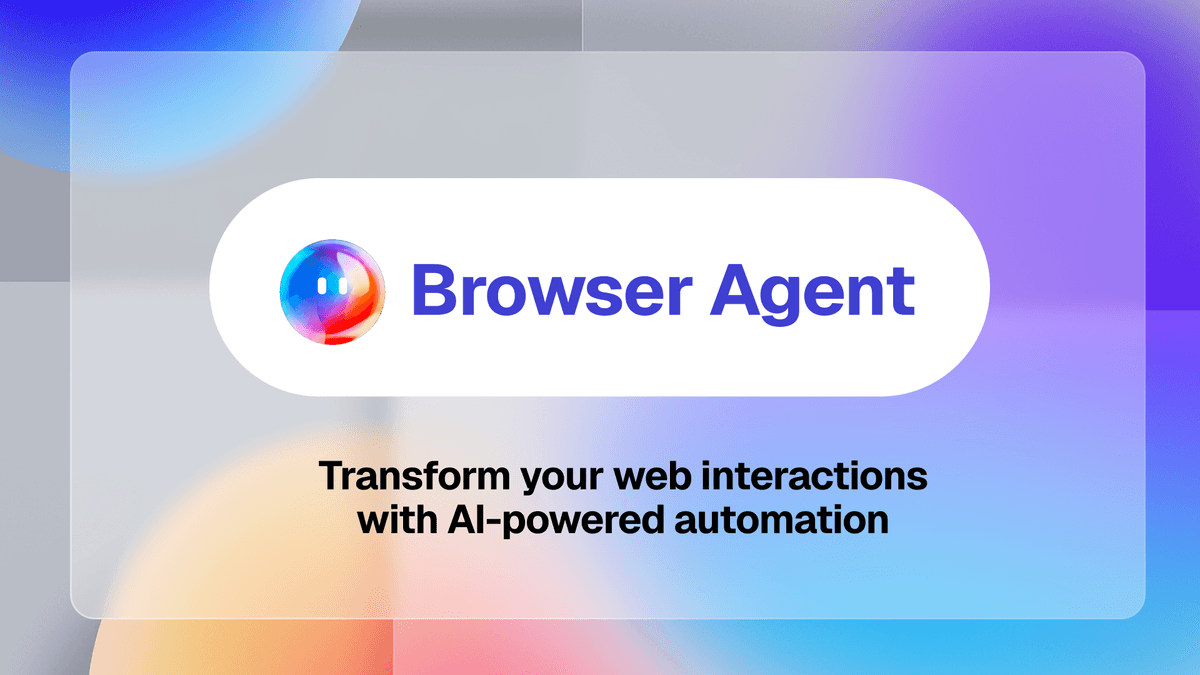What We're Learning From Our Latest Integrations
Sam De Brouwer
CEO & Co-Founder
July 31, 2025
Reading Time6 mins

Since we started rolling out our platform to our healthcare customers, a few critical themes are beginning to stand out—especially when it comes to integrations.
First, it's not just about what the AI can do. It's about how easily it can adapt to real-world, high-friction environments. Every healthcare organization operates with a different combination of software, workflows, and constraints. And every new integration teaches us something essential about building AI that truly fits.
We're Already Expanding Our Scope of APIs Integrations
We're continuously expanding the list of APIs we can integrate with for our Agentic AI platform. We're leveraging solid third parties like Nango. In the healthcare ecosystem, from EHRs and ERP systems to billing platforms, tax tools, CRMs, and document management systems, we've designed our platform to be deeply interoperable, even when standards and APIs are lacking.
But the truth is: integrations in healthcare are never one-size-fits-all. Even when two systems share a name, their configuration, customization, and use can vary dramatically from one provider to the next.
That's why we've invested not just in coverage, but in flexibility.
Browser-Based Agents Are Accelerating Onboarding
One of the biggest breakthroughs we're seeing is the power of browser-based agents to streamline deployment. These agents don't rely on APIs or custom code—instead, they interact with existing software directly through the user interface, just like a human would.
This is game-changing for mid-sized providers, many of whom rely on dozens of tools—including legacy platforms, third-party portals, and industry-specific software that offer little or no API access. On average, we see organizations juggling 30 to 50 different applications and document systems just to run their daily operations.
In this environment, waiting for custom integrations is simply not an option. That's where browser-based agents shine:
- They require no deep technical lift to get started
- They can automate workflows across systems that don't expose APIs
- They allow teams to test and validate use cases almost instantly
Think of them as hyper-flexible, low-friction workers who can learn to navigate whatever stack you're using—right now.
Integration Stacks Are Unique — and Often Unexpected
Every customer we work with has a different tech stack—and it goes far beyond the usual suspects like EHRs. We're seeing real needs for agents to plug into ERP platforms, billing and revenue cycle tools, payroll systems, tax software, and internal documentation platforms like SharePoint and Google Drive.
What's more, some of the most impactful workflows we're building happen between these systems, not just inside them.
We treat every new integration as a learning opportunity—mapping out the friction points, documenting nuances, and expanding our agent capabilities along the way.
The Orchestration Layer Is Where It All Comes Together
The biggest shift we're witnessing? Edge cases are becoming the norm. Healthcare operations are increasingly digital—but rarely standardized. Systems that used to be considered outside the scope of automation are now mission-critical: vendor portals, compliance tools, HR platforms, you name it.
This is where the true power of agent orchestration comes in.
Instead of building rigid pipelines for every integration, we've designed our platform around orchestrated agent workflows. That means:
- Agents can communicate, delegate, and collaborate with one another
- Each agent performs a specific role—from data retrieval to form filling to cross-platform syncing
- They operate across tools, documents, and interfaces—adapting in real time to the user's environment
This orchestration layer is what turns individual tasks into intelligent, repeatable workflows. And because it's built to learn and adjust over time, our system doesn't just automate—it evolves.
Small Lessons, Big Shifts
Each integration teaches us something about how real work happens in healthcare. And as we connect more systems, serve more users, and build more workflows, we're not just collecting features—we're building the infrastructure for agentic AI to thrive in complex, real-world operations.
Want to see how agentic AI could adapt to your stack?
Let's talk.
Book a Demo
See how AI Agents can transform your operations

Finally, Healthcare Is Becoming a Learning System with AI as its Catalyst
Sam De Brouwer
December 19, 2025
Reading Time7 mins

Connect Healthcare Systems with Agentic AI
XY.AI Labs Team
November 24, 2025
Reading Time8 mins

You love LLMs and co-pilots? You'll love AI Agents even more.
Sam De Brouwer
November 13, 2025
Reading Time10 mins

Why I'm Building for the Overlooked Majority of Healthcare
Sam De Brouwer
November 10, 2025
Reading Time6 mins

From Code to Care: How Zero-Cost Software Is Reshaping Healthcare
Sam De Brouwer
October 13, 2025
Reading Time8 mins

From Clicks to Care: Reinventing Healthcare Workflows with Our XY.AI Browser Agents
Scott Cressman
September 12, 2025
Reading Time5 mins

Tough conversations about success and failure are not new in AI
Sam De Brouwer
August 28, 2025
Reading Time3 mins

9 Real-World Applications of AI Across Industries
XY.AI Labs Team
August 24, 2025
Reading Time10 mins

10 Benefits of Artificial Intelligence in Healthcare
XY.AI Labs Team
August 23, 2025
Reading Time10 mins

Three Reports, One Message: Give Time Back to Care
XY.AI Labs Team
August 22, 2025
Reading Time2 mins

What Free Compute Signals About a Startup like XY.AI Labs?
Sam De Brouwer
August 14, 2025
Reading Time4 mins

Is Agentic AI Becoming the New OS for Healthcare Operations?
Sam De Brouwer
July 10, 2025
Reading Time4 mins

9 AI Trends To Transform Healthcare and Medicine And Why They're Closer Than You Think
XY.AI Labs Team
June 10, 2025
Reading Time5 mins

What I am Learning on the Front Lines of RCM in Healthcare - and Why We Can't Ignore Automation Any Longer
Sam De Brouwer
May 6, 2025
Reading Time8 mins

AI Agents in Healthcare: The Smart Workforce You Didn't Know You Could Have
Scott Cressman
April 17, 2025
Reading Time8 mins

15 Years at the Edge of AI and Healthcare - and Why Everything has Changed
Sam De Brouwer
